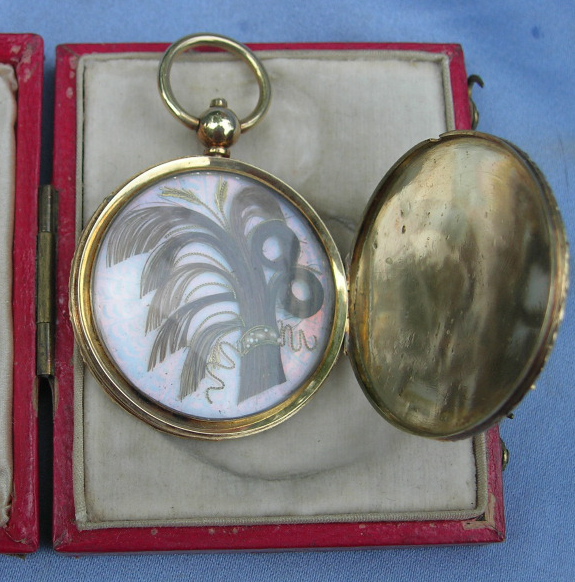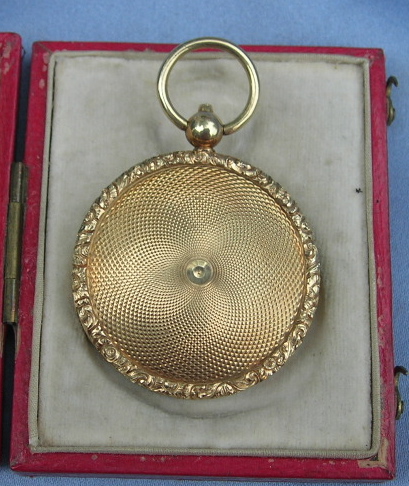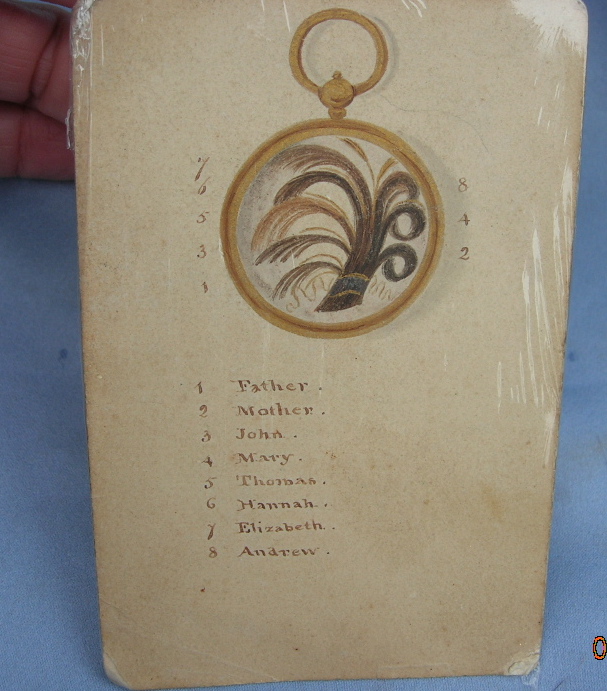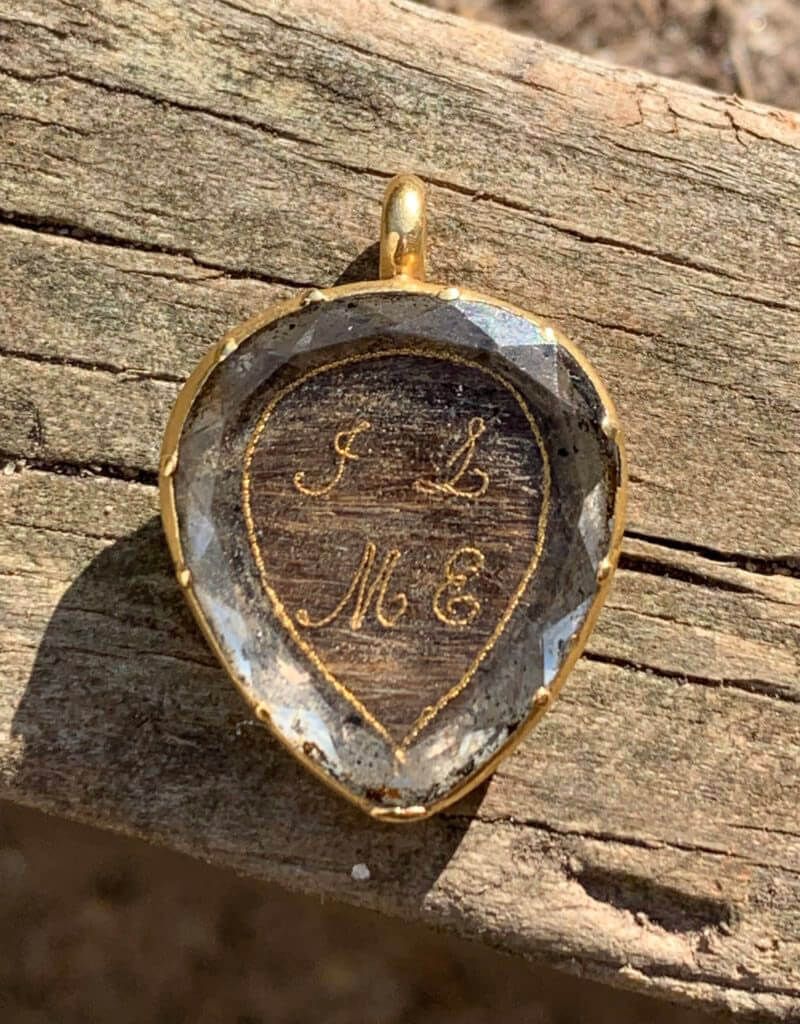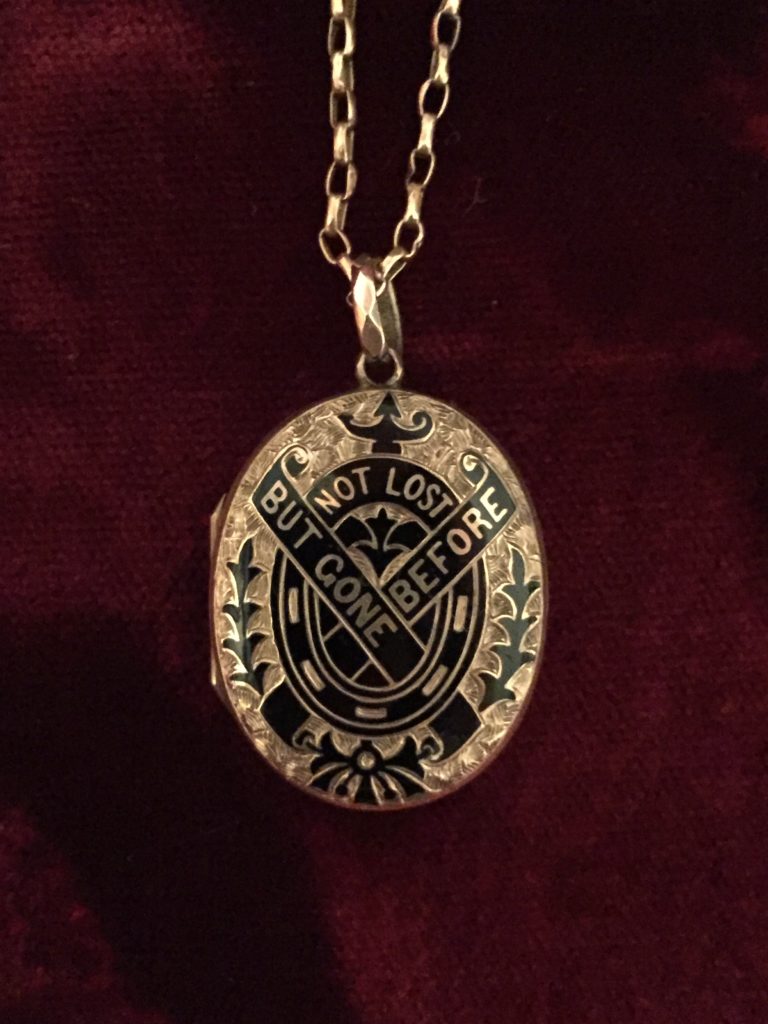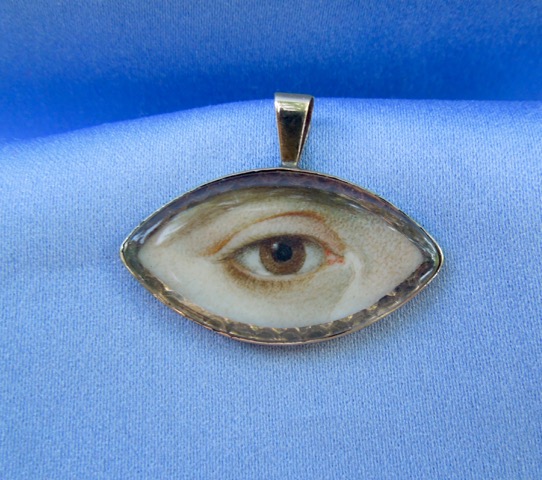Family Hairwork Locket, c.1830
Memorial and sentimental jewels were not simply an affectation, but they had their grounding in socio-political rules. Because of this, many of the jewels created are standardised, chosen from catalogues or completely bespoke without any signing of the maker. Pieces not hallmarked are mostly understood through their heritage, with the provenance being traced through family history.
What makes this piece so incredible, beyond being a beautiful piece, is that it retains its original design. ‘Father’, ‘Mother’, ‘John’, ‘Mary’, ‘Thomas’, ‘Hannah’, ‘Elizabeth’ and ‘Andrew’ are written with allocation to the palette-worked hair, so not only do we have the reference from the hair-worker, but we have a guide (retained by the family) as to whom the hair belongs.
The significance of this cannot be understated. It is a representation of an entire family, and from a sentimental perspective, it is ideal and the story that it tells with its original documentation is essential for historians and collectors. From this piece, we have a point of reference for an earlier time. From 1867, we have Mark Campbell’s ‘Self-Instructor in the Art of Hair Work‘, which gives us a defined catalogue of reference for hair working and its jewels. This may not cover each individual piece, but at least is a strong guide for late Victorian jewellery.
> Art of Hairwork 1: Victorian Hairwork Fob Chain With Serpent Clasp
> Art of Hairwork 2: Directions for New Beginners
> Art of Hairwork 3: Victorian Hairwork Fob Chain With Locket
> Art of Hairwork 4: Victorian Hairwork Fob Chain With Acorn Charms
> Art of Hairwork 5: Victorian Hairwork Fob Chain With Black Enamel Fittings
Jeweller’s original designs for their work are often lost, with many of the more popular jewellers having references for their pieces, such as Tiffany, but those production houses created their own style and the manufacturers that exist today have archives and records. Due to mourning and sentimental jewels being an ancillary factor in jewellery production – relating back to the necessity of the jewel for its sentimental purpose – a defined record of the jewel is often lost. Due to being a bespoke piece with the design being for the customer or a production level so high that a set design wasn’t worth noting beyond its production value.
Many records exist of the previous late 18th century Neoclassical movement, where salespeople had pre-designed sentimental art upon ivory (to be set in a miniature, ring or pendant), as these were used to on-sell designs to families in mourning or people who required a sentimental token of love to be given to a loved one.
Here, we see the palette-worked hair, with beautiful curling and feathering to the edges, perfectly cut. The sheafs at the top of the hairwork were a common motif, denoting the aged and resurrection, but also we have the gold wire and pearls entwining the family together.
From its case, the locket has the machine-turned design that was quite popular from c.1820, which was due to advances that came about in the Industrial Revolution, but its main feature of fashion is the floral border that was a main design element in the Gothic Revival period. More can be found below about this:
> Gothic Revival in Culture and Jewellery: Part 1, c.1740-c.1850
> Gothic Revival in Culture and Jewellery: Part 2, c.1850-c.1900
> Gothic Revival in Culture and Jewellery: Part 3, Breaking Perceptions
Still in its original case, this piece is the benchmark for many of its contemporary sentimental jewels. Being popular, bespoke and fashionable resonates for the early 19th century. For a piece driven by family sentiment, more can be seen of how sentimental jewels were used in the following piece:
The 19th century drew together the notion of the family as the ideal, beyond the individual. Sentimentality was swiftly becoming its own industry and this piece shows just how important the union of individuals into a singular unit truly was.




